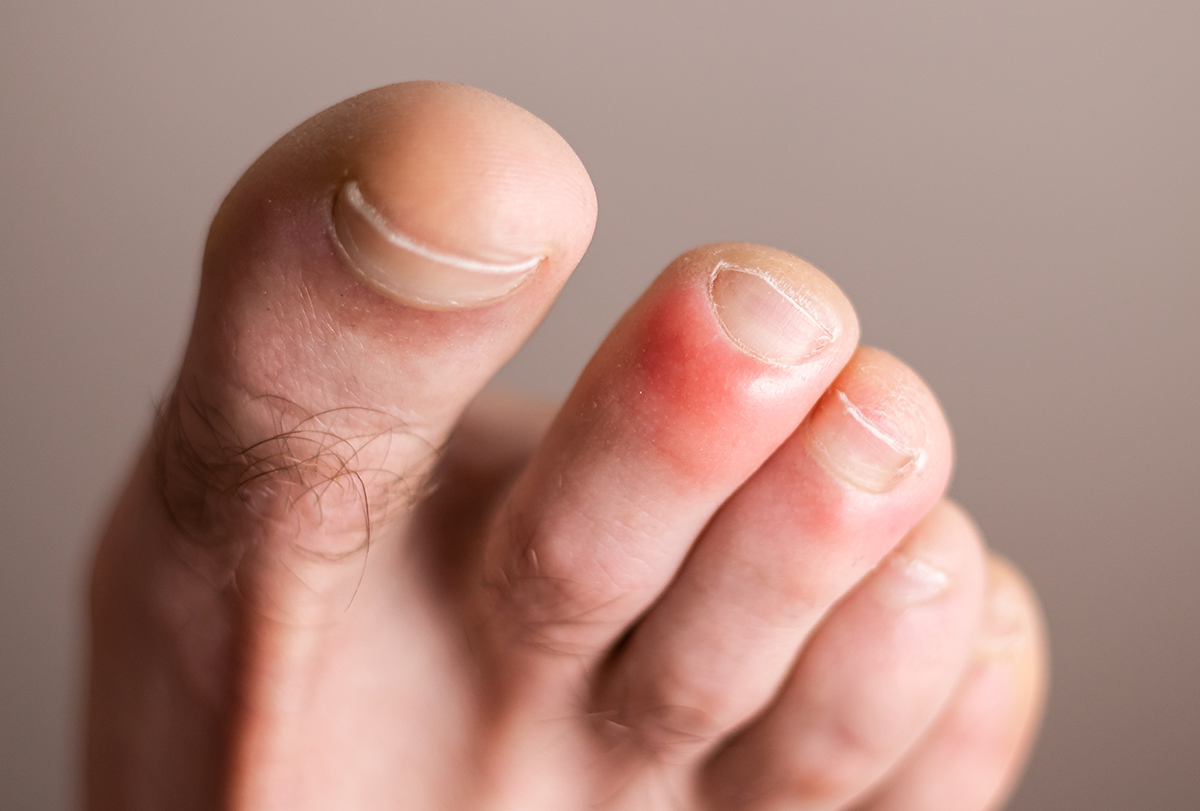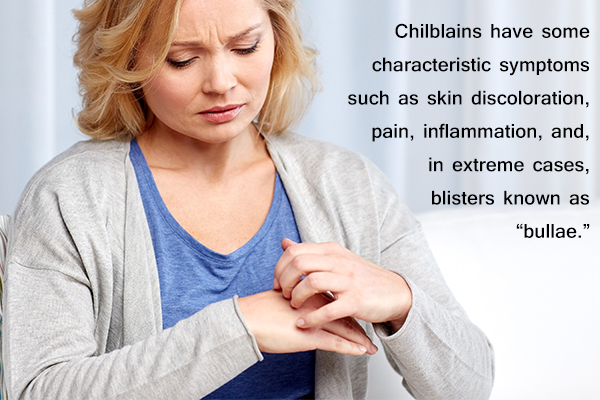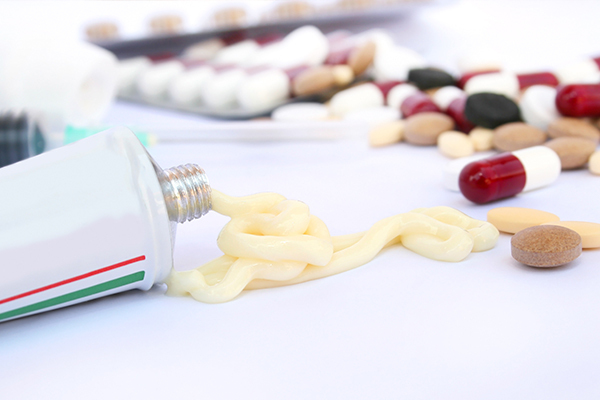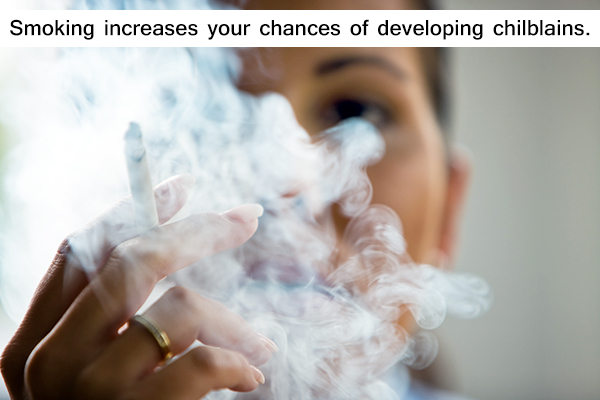In this article:
Chilblains are red or discolored skin lesions that are caused by cold weather. They usually occur in exposed skin such as the fingers, toes, and earlobes due to exposure to cold air.

Chilblains are also referred to as “pernio” or “perniosis” in medical terms. (1) They are mostly caused by inflammation of the blood vessels when blood circulation is affected by the weather, thus depriving the affected area of oxygen and nutrients.
Chilblains may heal on their own after a couple of weeks.
Causes of Chilblains
Chilblains mostly occur when the skin is exposed to extremely cold, damp, or windy air.
They can also be caused by a sudden change in surrounding temperature, such as warming the hands too quickly after exposure to chill. The sudden heat exposure causes blood vessels to expand extremely fast, leading to blood leaks and skin discoloration.
Chilblains may be a result of such temporary conditions or may sometimes occur as a side effect of other blood and tissue abnormalities (secondary consequence).
Although chilblains are observed in people of all ages, this condition tends to affect children and older people more often. It is also reported to occur more commonly in women. (2)
Symptoms of Chilblains

Chilblains have some characteristic symptoms such as skin discoloration, pain, inflammation, and, in extreme cases, blisters known as “bullae.”
Other symptoms may include:
Treatment for Chilblains
There are several treatment options available for Chilblains. Some of the most common ones are as follows:
Systemic treatments:
- Nifedipine (Procardia) is a vasodilator and helps relax the small blood vessels to ensure easy blood flow and restore proper circulation. This helps cure chilblains that are not resolving by themselves. (1)
- Painkillers such as paracetamol and ibuprofen can also help provide relief from burning or painful skin sores in people suffering from chilblains. (5)

Topical treatments:
- Topical corticosteroids are usually the first-line treatment for many minor skin ailments. (1) Using topical betamethasone valerate 0.1% can help relieve the itching and irritation and thus soothe the area. (6) Topical mometasone is another useful corticosteroid that can help resolve symptoms of chilblains such as redness and inflammation. (7)
- Nitroglycerin 0.2% used topically can be an effective treatment for skin lesions caused by chilblains. (8)
- Topical vasodilators can improve blood circulation by relaxing the blood vessels and hence can resolve chilblains. (9)
- Balmosa cream can be used to reduce the pain and irritation in unbroken lesions caused by chilblains. Do not use Balmosa cream on broken or cracked lesions.
Diagnosing Chilblains
Chilblains are diagnosed by a doctor after a physical examination. The doctor may ask you to undergo some tests to rule out secondary chilblains caused by underlying conditions.
People suffering from chronic or recurrent chilblains may be required to do a skin biopsy. Skin biopsies of such individuals usually show deep lymphocytic vasculitis or swelling below the epidermis around the affected area.
Risk Factors for Chilblains
Although chilblains are very common and can affect anyone, some people are more prone to this condition.

- Chilblains tend to occur more frequently in older people.
- Smoking increases your chances of developing chilblains.
- Hereditary factors or a family history of the condition may make you more susceptible to having it.
- People suffering from peripheral vascular disease are at a higher risk.
- Wearing tight clothes or exposing the skin in cold weather can lead to chilblains.
- Certain disorders such as underlying acrocyanosis and primary or secondary Raynaud phenomenon can increase the risk of developing chilblains.
- People with systemic lupus erythematosus (chilblain lupus) or other connective tissue diseases can easily develop the condition. (10)
When to See the Doctor
You may want to see the doctor if you have the following symptoms:
- Severe pain
- Asymmetrical chilblains, i.e., when the discoloration seems to be localized to a particular area such as a finger or two
- Cracked lesions that are painful or oozing with pus
- Itching, irritation, and reddish discoloration that do not seem to resolve after a couple of weeks
- Recurrent chilblains
- If you suffer from diabetes
Final Word
Chilblains are a relatively mild condition and usually resolve on their own. However, some people tend to have recurrent chilblains that may develop every winter.
Prevention may be the best cure for this condition. Make sure to wear gloves and scarves to protect your skin extremities from exposure to cold air. Do not wear tight clothing in winter. Consult a doctor if your symptoms persist even after a couple of weeks.

- Was this article helpful?
- YES, THANKS!NOT REALLY


